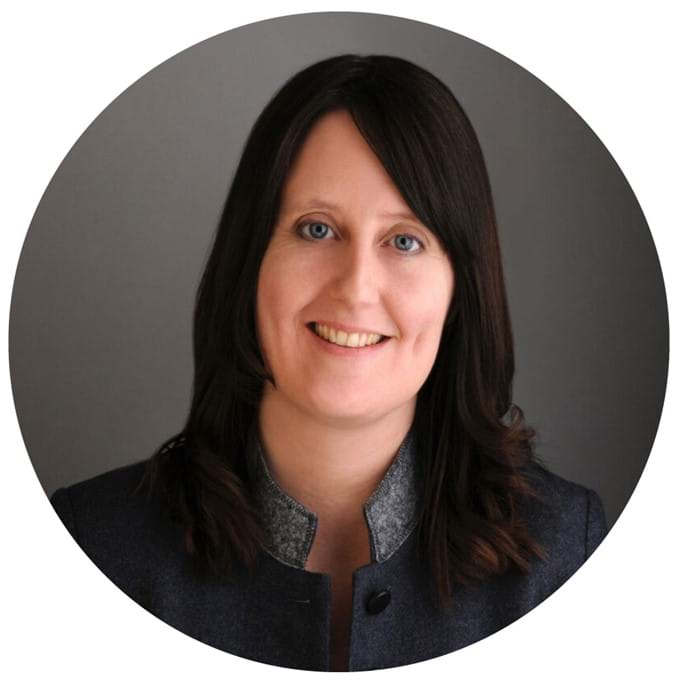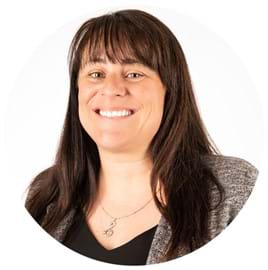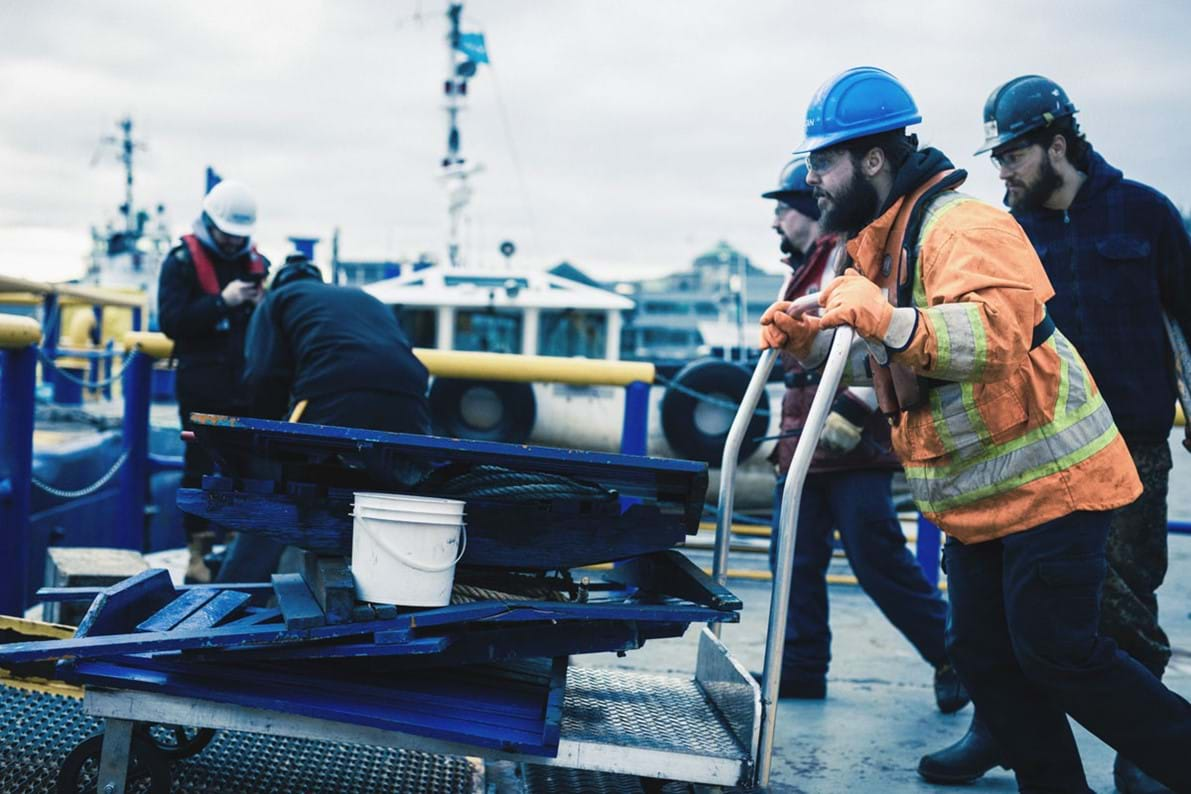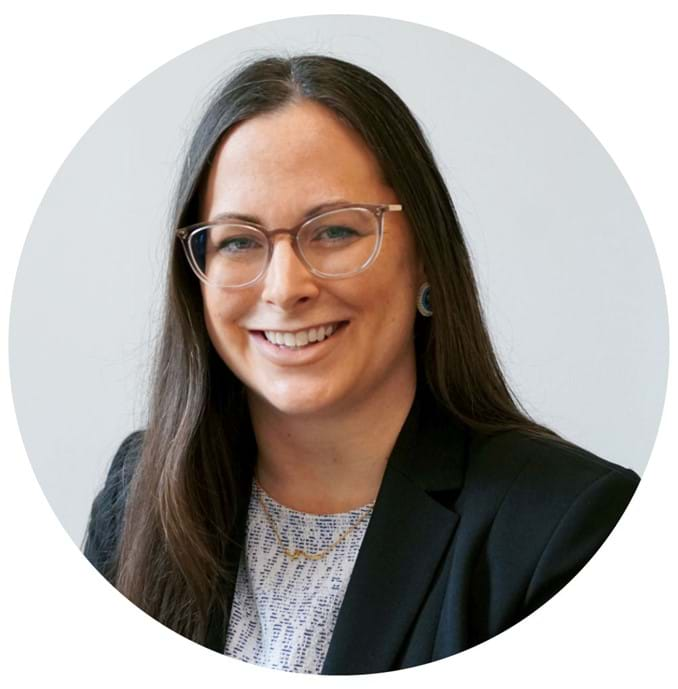
Marine transportation’s greener footprint holds sway with today’s younger workers
WorkforceThe maritime industry faces major issues in terms of recruiting sufficient labour. In Canada, for example, a recent Transport Canada survey indicates that 43% of the marine workforce is set to retire over the next decade, including 52% of engineering officers and 47% of deck officers.
Approximately 19,000 new workers must be hired over the next 10 years for commercial vessel operations, which is equivalent to 68% of the workforce. The estimates don’t include the needed replacements in the Canadian Navy or Coast Guard, as well as positions related to other federal government maritime responsibilities. The challenge is evidenced by Canada’s unemployment rate being at a half-century low in April 2023, with 22% of Canadians aged 54 to 65 set to retire being at an all-time high.
In terms of good news, younger people are seeking new workplace experiences along with jobs that coincide with their values for a more sustainable future. The challenge is to make them aware of the greener jobs available within marine transportation.
The Canadian Marine Careers Foundation (CMCF), as well as Clear Seas, and the Comité sectoriel de main-d’oeuvre de l’industrie maritime (which is the maritime industry’s human resources sectorial committee in Quebec) are each working to positively address the issues.

“It’s definitely a challenge with more of the population getting older,” Julia Fields, CMCF’s executive director, says. “We need to be competitive against many other industries all vying for the same workforce talent.”
The CMCF, a Green Marine supporter, is serving as a focal point to make Canadians aware of career opportunities, potential training, as well as possible educational assistance. It is also connecting potential workers directly with employers through its Imagine Marine portal. “It’s designed to be where everyone goes to learn about marine careers, the different training institutions and programs out there, as well as the bursaries available,” Fields explains.
Popular job board
Launched in late July, the portal’s Imagine Marine job board received more than 20,000 visits in its first two months. “In addition to connecting employers and potential workers right away, the Job Board helps both second-career seekers and younger students to see the actual entry-level positions available in the maritime industry,” Fields says.
Imagine Marine followed the CMCF’s earlier survey of youth aged 14 to 29 across Canada to get a sense of what they were seeking in terms of careers, how they wanted to be approached about possibilities, as well as what they knew about maritime opportunities.
The findings detailed in the CMCF’s National Youth Survey last year indicated that young people saw their ideal job as being secure, well-paying, as well as offering career progression and allowing them to apply their personal goals and values to their work.
The marine industry definitely checks all those boxes
A lack of knowledge among young Canadians about the diverse range of marine careers also became apparent and is now the focus of the CMCF’s information campaigns and outreach programs. “We found young Canadians were open to working in the marine industry but didn’t know a lot about the specific jobs that existed,” Fields explains.
This past year, the CMCF wasted no time in starting to address this gap by having one of its program managers collaborate with ship operators and other marine employers to organize vessel tours in the Great Lakes, and in-class presentations or site tours in British Columbia.
Student outreach
In October, the CMCF partnered with Canadian Geographic Education to launch Marine Month in Canada. The initiative held throughout the month was designed for Grade 5 to 8 but welcomed all to the free online resources to familiarize students with career possibilities within the maritime industry and connect directly with experts across the country through live virtual events.
We’re very excited about our partnership with Canadian Geographic Education because it has a network of some 25,000 educators for students in kindergarten through Grade 12 who use its resources
Along with students having a chance to speak to a ship captain or marine engineer, teachers obtain an activity book that takes the curriculum into account in giving real-life examples of using geography, for example, to develop mapping skills, as well as exploring the maritime options for students interested in studying engineering or science.
The survey also revealed that fully 20% of young Canadians were interested in working outdoors. “Not everyone wants a 9-to-5 job either,” Fields says. “We just have to find those people who’d like to work outside and different shifts.” The CMCF is reaching out by showcasing the industry’s adventurous side, along with its unique, scenic locations, and the connections to nature that people within the industry experience coast to coast.
Marine also scored well in terms of youth wanting a meaningful and fulfilling career. Three-quarters (76%) of those surveyed indicated they believe the industry is focused on environmental sustainability and protecting waterways and ecosystems.
Young people want to be a part of companies that demonstrate their care and responsibility for the environment through action, and we at the Foundation again believe this is a real strength of our industry in attracting them
“It’s why we’re emphasizing how our industry is going above and beyond through programs such as Green Marine to reduce its environmental footprint, as well as the green technologies and alternative fuels that are being trialed by our industry, along with the marine research being supported to protect marine wildlife.”
Decarbonization is expected to change most every facet of the marine industry. “We’ll not only need more environmental managers and technologies, but new training programs for mariners and others in the logistics chain and shipyards to handle the new fuels,” Fields explains.
Gender gap
Improvements have been made in terms of getting women on board. “There’s definitely more women in leadership positions at ports and in shipping operations, and more interest in our industry generally, but we still have a long way to go when it comes to women as mariners.”
Research done by Transport Canada in 2020 indicated that women are only filling 3-to-7% of onboard positions. The Foundation is showcasing some of these women so that others can see themselves in these roles. “In our Q&As, blogs and other communications, we’re also relating how women got into the industry, what they like about it, how their careers are progressing, and the company support that they’re receiving,” Fields says.

One of the challenges is life-work balance, which ship operators are striving to improve for all employees, given particularly its importance to younger generations. “Some operators have decreased the rotation time, so that you have one month on and one month off,” Fields says.
“They are also trying to improve flexibility, especially for women in terms of maternity leave and shoreside position flexibility for parents, so they can be home daily while their children are young – but this remains one of the biggest challenges and I don’t think we’ve come up with all the solutions yet.”
The CMCF is looking next at what tools and resources could be developed industry-wide to help with equity, diversity, and inclusion in the maritime industry. “For example, we’re planning a dedicated workforce development conference next year when we’ll bring more experts and resources together in this area,” Fields adds.
Other research and strategies are planned but are dependent on obtaining the necessary public and private funding. “For example, we don’t yet have very good data about the different pathways to seafarer careers, such as current graduation rates, or barriers that institutions face in terms of attracting or retaining students,” Fields explains. “There’s also the need to understand the internship possibilities, as well as the best ways to integrate seafarers with training from other countries.”

Fields warns that it won’t be possible to expand on the environmental advantages of the marine mode, compared to rail or road transportation, through shortsea shipping routes, for example, unless enough skilled workers are recruited.
“Having a robust and properly skilled workforce is critical to the success of our industry going forward,” Fields emphasizes. “Worker shortages could affect every aspect of the marine business, including the potential to expand operations or invest in greater sustainability if more and more funds need to be funneled into recruitment and retention.”
Building awareness
The CMCF also worked with the Royal Canadian Navy, the Canadian Coast Guard, and several other federal government departments to organize a Great Canadian Marine Careers Expo in Sydney, Nova Scotia, and subsequently in various locations in Quebec and Ontario throughout this fall. “With different information booths, as well as vessel tours, the expo has been geared to both high-school students and second-career seekers with different information booths as well as vessel tours,” Fields says.
In Quebec, the Comité sectoriel de main-d’oeuvre de l’industrie maritime (CSMOIM) is reaching out on various fronts to make people more aware of the career opportunities and benefits available within the maritime industry. The sectorial committee is also taking steps to make the industry more welcoming of people from traditionally under-represented segments of the population, as well as the changes that will be necessary for a decarbonized future.

“Quebec’s maritime strategy and the pivotal role that the shipping industry played in keeping goods moving during the COVID pandemic have both raised awareness of the marine industry with younger people, but there’s still a lot more than could be done,” says Manou Bernard, CSMOIM’s executive director.
Decarbonization’s appeal
She notes that the 2023 Youth Study done by Leger indicates that younger generations are increasingly pessimistic about the planet’s future with 37% increasingly despondent about their ability to limit climate change impacts compared to 30% in 2022.
We have an immense opportunity here to show how the maritime industry is working to fundamentally change supply chains with the efforts towards full decarbonization
“We’re already starting to get more attention from younger potential workers with the announcements of green shipping corridors, but we could still do more to make young people aware of how crucial the St. Lawrence, for example, is to sustainable transportation.”
Reaching out to traditionally underrepresented portions of the population is essential, particularly with women being more concerned about the environment. However, Bernard says those recruiting and retention efforts will only be successful if everyone is made to feel welcomed and safe. It’s why the CSMOIM launched a psychological and sexual harassment training program this fall. The 10 modules, which each feature specific industry examples, are available online to registrants so they can move forward at their own pace.
Along with new work opportunities, decarbonization is presenting new training challenges.
We’re beginning such a huge industry transition with such rapidly changing technology that it’s not always evident what the industry will need in terms of people’s skills set even a year or two from now

Photo: Comité sectoriel de main-d’œuvre de l’industrie maritime
Bernard would like to see greater collaboration and facilitating measures between maritime industry stakeholders and educators to determine new and evolving professional training needs, as well as to adapt training content to the greener skills that will be required.
“It would be nice if we were all on the same page so that trained personnel could easily move between companies, making the available labour pool better prepared overall,” Bernard says. “I also think we could do a lot more by working together to create practical placements that support entry into the industry and then encourage career development.”
Respectful, supportive assistance defines the Clear Seas approach to Indigenous communities
Welcoming increased diversity into the workforce is a key factor to successful hiring and a more fully engaged society and economy. In Canada, the Indigenous population increased by 9.4% between 2016 and 2021, surpassing the growth of the non-Indigenous population by more than 5.3% over the same period. This segment of the population continues to be younger, with just over one in six working-age Indigenous people or 17.2% close to retirement (aged 55 to 64), compared to 22% of the non-Indigenous population in Canada.
Clear Seas, a not-for-profit research centre providing fact-based information to governments, industry, and the public on marine shipping issues, is taking a unique approach to the workforce challenge by prioritizing the needs of Indigenous people and their communities first and foremost.

“We at Clear Seas recognized that many First Nations communities along Canada’s coastlines are still being left out when it comes to the marine industry in terms of everything from employment to the environment and other key decision- and policymaking,” says Stephanie Hurlburt, the program lead for Indigenous Programs at Clear Seas.
For example, not enough attention has been paid to how people from coastal First Nations might be able to work for the maritime industry while still living within their communities. Traditional knowledge has also largely been ignored in relation to regional ecosystems.
Clear Seas, which is a Green Marine supporter, is currently working on two fronts. The first is supporting marine-related research of importance to Indigenous communities.

The Indigenous researchers are encouraged to take the approach of Albert Marshall, the respected Mi’kmaq Elder whose idea of two-eyed seeing recognizes both Indigenous and Western ways of knowing and the greater strength achieved by combining these knowledge systems.
Funded by Mitacs, the Indigenous Internship Program is designed to give Indigenous post-secondary students, as well as those interested in attending college or university as adult learners, the opportunity to carry out marine-related research of importance to their own or another Indigenous community. “The projects could be related to anything involving the oceans or fresh waterways of interest or concern to an Indigenous community,” Hurlburt says.
A total of 15 paid internships have taken place in three provinces to date. The projects have ranged from studying how the Emerald ash borer beetle that arrived from Asia on pallets unloaded from ships is infesting culturally significant ash trees in Ontario, to marine shipping’s impacts on orca whales in the Burrard Inlet, to the restoration of clam gardens within traditional territories along coastal British Columbia.
Several interns have applied to do additional research and can submit applications for up to three projects.
In addition to helping their communities, they’re also finding out what they might like to do as further research or study at a university and often makes them excited about enrolling in further marine-related education
“The findings remain within the community unless the researcher and the people involved in the project from the community decide to share it with others,” she adds. “So far everyone has wanted to share their findings, but they want to make sure that it’s done on their terms, which is something we really want to respect.”
Sharing takes many forms. One student, for example, rented a small hall and served traditional food to her community while she talked about her project. Another student interviewed members of the community for his project and produced a YouTube video with their permission. There are also students who have produced more typical academic reports.
The second program offered by Clear Seas is called the Indigenous Career Pivot Program. Funded by Canada’s Ocean Supercluster, another Green Marine supporter, the program was originally designed for mid-career people looking to enter the maritime sector but is now open to Indigenous people at any career stage interested in working in the maritime industry.
Clear Seas has partnered with several training institutes, include the British Columbia Institute of Technology (BCIT), College of the North Atlantic, and ACCESS (the Aboriginal Community Career Employment Services Society). In B.C., eight participants completed their bridge watch certification last year, giving them the prerequisite necessary for a career at sea with the Canadian Coast Guard, BC Ferries, and other companies operating ships or tugs. “It’s really been a beneficial and successful program,” Hurlburt says.
Participants are subsidized to help them, for example, to attend training in a more expensive city, such as Vancouver. Or to return home regularly during their lengthy studies.
Clear Seas has also offered subsidies to small and medium businesses in the maritime industry to provide internships to Indigenous people who already have education in anything from accounting to program management that could be applied to maritime work.
In our third year, we want to create a true network of support, training and wage subsidies to wrap around an Indigenous person who wants to make that move into the marine industry, helping with that transition
“And we’ll support both people who want to stay in or near their communities, and those who don’t.”
The overall goal is to help to create a sustainable, inclusive marine industry environment that will help to build a healthy, robust blue economy. So Clear Seas is also supporting employers with cultural competency training to ensure they are ready to welcome Indigenous people into their workforce.
“I don’t think it’s intentional to exclude people, but there may well be some uncertainty still about how to go about attracting Indigenous people and making them feel at home,” Hurlburt explains.
___________________
READ MORE ON THIS TOPIC:
Net-zero and other sustainability goals are changing the demand for job skills
